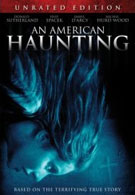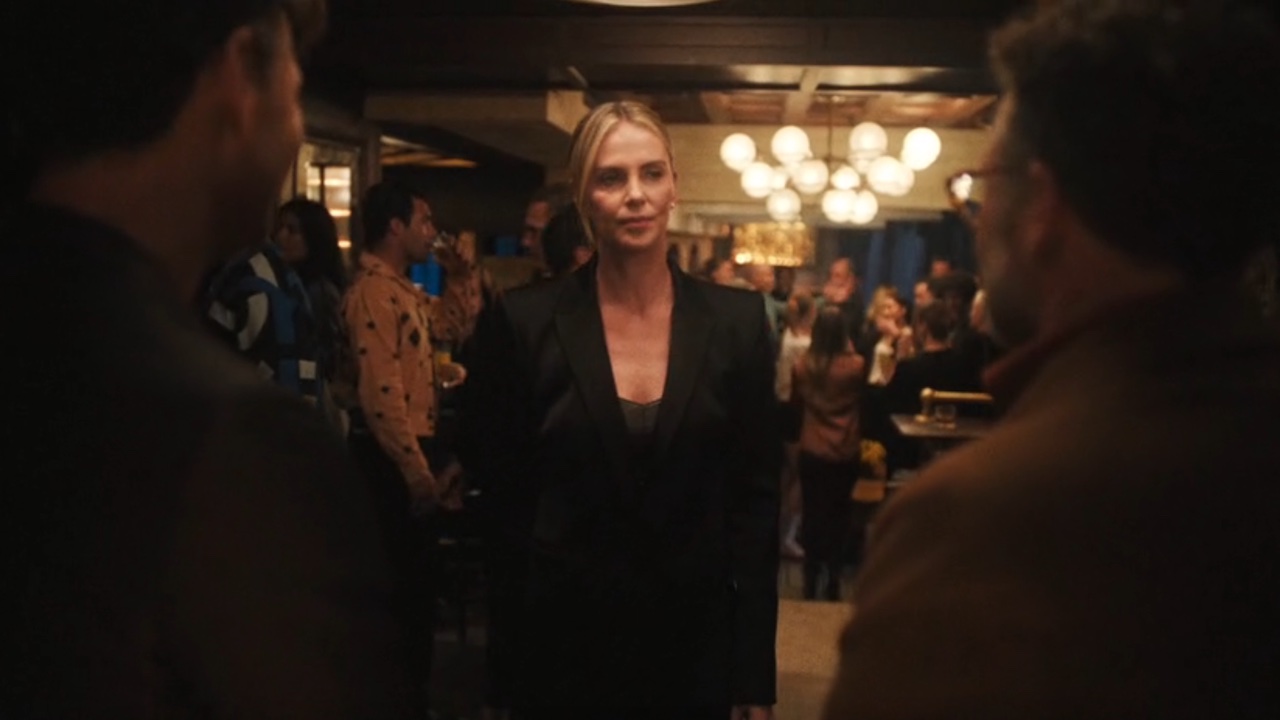An American Haunting is a blend of the history and myth surrounding the spirit known as the Bell Witch that terrorized the Bell family of Red River, Tennessee in 1817. For historical interest, the haunting remains the singular instance in which a spirit is legally listed as a cause of a death; that of family father John Bell. He is played by Donald Sutherland, and wife Lucy by Sissy Spacek, but the actors' legendary presence is not enough to glue together the inconsistencies of this film. The movie gets muddled as it tries to articulate themes within the Horror convention. It's most notably interested in the psychological sub-genre of horror, presenting the spiritual disturbance through the Bell family daughter, Betsy (Rachel Hurd-Wood). She is the character initially terrorized by the spiritual entity; the apparitions are invisible to her friends and family, thus making her seem mentally imbalanced. This is how the psychological horror film works: one character is tormented, while the rest of the world looks at them like they are crazy; the terrorized victim is conventionally separated from the status quo of society in this manner because they cannot conform.
The psychological approach An American Haunting takes becomes diluted and confused, first, as it extends Betsy's physical and mental anguish to the rest of the Bell family when the evil entity haunts the entire home; and second, when it takes a sudden, sharp interest in an unrelated social issue. Betsy's father rapes her repeatedly; John Bell is the incestuous demon, the horrific figure terrorizing Betsy. But the film addresses familial incest superficially as it flip-flops between it and the supernatural haunting of the whole house; the audience is left to question whether this story is a horror or whether it wants to be a social drama.
It is not revolutionary for the Horror film to comment on social or historical issues through its subtext; it has always done that, most notably through Horror masters like George A. Romero (Night of the Living Dead [1978]) and Joe Dante (The Howling [1981]). Mr. Solomon, however, shapes his subjects of social interest and horror convention with a wide-toothed comb, never braiding them together in a manner that shows us he understands the horrific impact of each.
Combined with a cumbersome bookend structure that brings the incestuous story-line up to modern day and the addition of a horse-drawn carriage that lands a 360-degree somersault, we end up with a horror film that scares not by the construct of its imagery and metaphor, but that scares us off with its clumsy narrative didacticism.
I have a soft spot for independent pictures because they are usually told in earnest with a lot of heart, which cannot always be said for big Hollywood moneymakers. I like watching new filmmakers hash out their stories with a barebones budget, it forces them to work creatively with what they've got, and can inadvertently produce an aesthetic that gets noticed and perhaps conventionalized.
As I watched An American Haunting for the first time on DVD I sat calmly to observe what Mr. Solomon's film was trying to say; I waited for those energetic moments that told me this filmmaker is desperately passionate about Horror or a specific social or political issue. The great thing about independent film is that there is room for error, but when a filmmaker takes himself too seriously, like Mr. Solomon, his vision feels forced, heavy-handed. Nonetheless, by movie's end I was glad to give the director the benefit of the doubt. I could at least give a respectful nod to his finished product, note his name, and anticipate his artistic growth in future films. Then the DVD extras began. An American Haunting features the usual in DVD extras: a slot for alternate and deleted scenes and an interview with a lead actor (here it is Sissy Spacek). There is a section for Internet promotions that the production company used to spread word about the film, but the outstanding segment is the Director's Video Commentary, an opportunity Mr. Solomon snatches up, not to inform his audience about artistic concerns, production anecdotes, or general thoughts or information about the film, but to postulate about the L.A. film community and insult critics who disliked his movie.
The picture does not run with his voice-over as traditional commentaries do. Rather, Mr. Solomon, apparently constrained by the walls of the studio, takes his commentary to the streets. Actually, to the car; a two-shot holds him and his lady companion in the backseat, as they are chauffeured through the streets of L.A., the cityscape seen through shot-reverse shot editing of Mr. Solomon and the view through the front windshield. Now that the scene is set, Mr. Solomon is thinking. "Why does someone become a movie critic?" he asks. It's a rhetorical question answered: Critics are failed filmmakers, talent-less, and eager to be wined and dined among Hollywood's players, of whose success they are jealous.
So now, it is personal. With such a sour taste left in my mouth from Mr. Solomon's misinformed invective, I do not have respect enough to endorse his movie in any regard, perhaps other than to view it as an exercise in poor filmmaking. A critic can be your best friend, Mr. Solomon. You've just made some enemies.
Yellowstone Actress Joins Grey's Anatomy, And I Hope She Doesn't Fight The Surgeons Like She Fought Beth Dutton
The Story Behind How Tom Holland And Jon Bernthal Helped Each Other Audition For Their Massive Marvel Roles: ‘I’m Gonna Get This’
Roman Reigns Surprising Comments About His WWE Future Are Making Rounds, But I Don't Think It Means What People Are Saying











